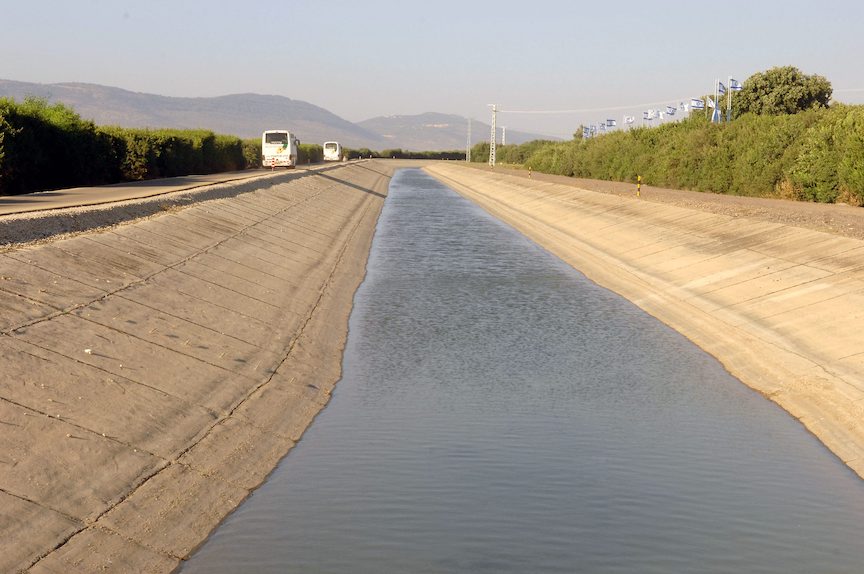1964 NATIONAL WATER CARRIER COMPLETED

Migdal (tower going up)
In 1964 Israel completed a national water carrier to convey water from the Kinneret (Sea of Galilee) to the Coastal Plain.
The National Water Carrier stands as one of Israel's most remarkable feats of engineering, symbolizing the nation's commitment to overcoming its inherent water scarcity challenges. Conceived in the 1930s by Walter Clay Lowdermilk, an American soil conservation expert, the idea of a vast water transportation system would only come to fruition decades later, with the Israeli government approving a detailed plan in 1956 based on the expertise of both the national water planning agency, Tahal, and American engineer James Hayes.
Constructed in stages, the primary focus was the main conduit, subsequently followed by secondary and tertiary branches that extended across the nation. The engineering challenges were immense. The Sapir Pumping Station, designed to lift water from the below-sea-level Sea of Galilee over the Galilee region's hilly terrain, emerged as one of the world's largest pumping stations of its era. To navigate the diverse Israeli topography, the construction necessitated several tunnels and canals, with the Eshkol Tunnel, stretching 13 kilometers, being the most extensive. Additionally, reservoirs like the Eshkol Reservoir, Israel's largest, were strategically placed to maintain consistent water flow and serve as treatment centers.
Beyond the technical challenges, the project's geopolitical implications were profound. The route and water sources of the carrier were contentious issues, causing tensions with neighboring nations. The Arab League's proposal to divert the Jordan River's headwaters, aiming to decrease the water reaching the Sea of Galilee, further strained relations. Such disputes over water rights even contributed to regional conflicts, including the 1967 Six-Day War. Given its strategic significance, parts of the water carrier, especially those proximate to borders, were built underground to safeguard against potential attacks.
After years of meticulous planning and construction, the primary phase of the National Water Carrier was inaugurated in 1964. Over the subsequent years, it underwent expansions to cater to the water needs of various parts of Israel. More than just an infrastructure project, the National Water Carrier epitomizes Israel's determination and innovation in ensuring water security for its agricultural and urban sectors, cementing its legacy as a cornerstone of the nation's development.
 >
>